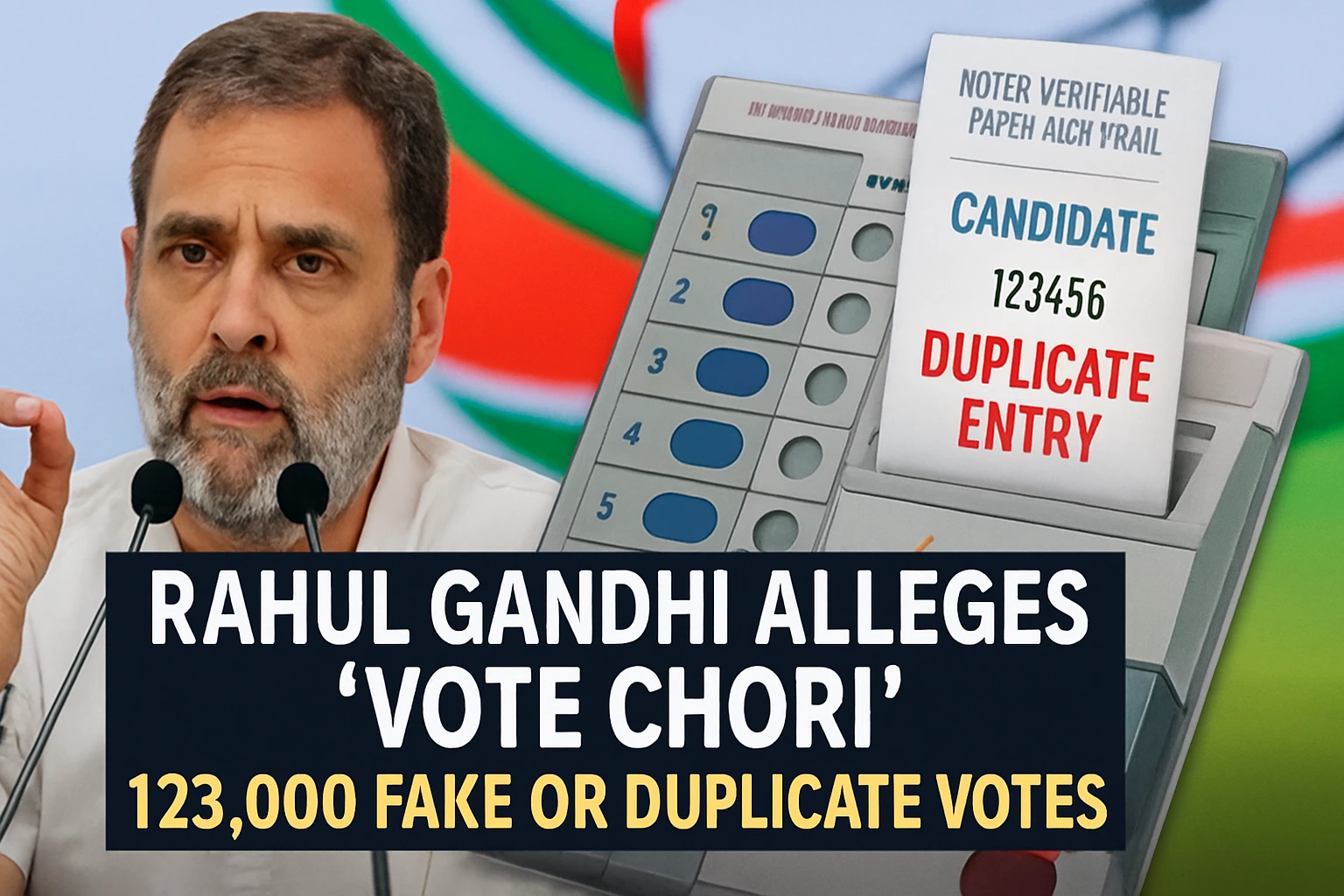Rahul Gandhi has pushed his “vote chori” accusations up a notch by naming exact figures and pointing the finger at Prime Minister Narendra Modi’s constituency. At a recent press briefing he said the problem is not random error but large-scale manipulation and he didn’t shy away from specifics.
The numbers he cited
Rahul presented a breakdown he says shows systematic tampering in multiple constituencies. According to his claims, the irregularities include:
• Over 1,00,250 votes allegedly “stolen” in the samples he shared.
• 11,965 duplicate entries on voter rolls.
• 40,009 suspicious or “fake” addresses.
• 10,452 bulk registrations.
• 4,132 invalid or unusable photographs on voter ID records.
• 33,692 questionable uses of Form-6 (the form used to add voters to rolls).
He framed these figures as part of a pattern not isolated mistakes and said similar anomalies show up across states.
The Varanasi angle and Modi
Crucially, Rahul singled out Varanasi, Narendra Modi’s Lok Sabha seat, claiming that “thousands of genuine voters” were missing or mis-recorded there. By anchoring the allegation to the Prime Minister’s own constituency, Gandhi tried to signal that the issue is national, not local “If this can happen in the PM’s seat,” he said, “it can happen anywhere.”
The BJP has rejected the charge as political theatre. Mr. Modi himself has not directly addressed these particular claims; he has continued public appearances focused on governance themes, while party spokespeople call Gandhi’s figures exaggerated or politically motivated.
The Election Commission’s reply
The Election Commission (EC) responded quickly and sternly. It described the allegations as “baseless” and asked Rahul Gandhi to produce sworn proof including a signed affidavit and the underlying voter data within a short timeframe. The EC warned that making unverified public allegations could invite legal consequences under rules tightened in recent years.
Why the details matter
Numbers change a political story. Saying “vote chori” is one thing; producing a list of tens of thousands of allegedly forged or duplicate records raises the bar and forces institutions to respond. Practically speaking:
• If Gandhi submits verifiable data, the EC and potentially courts will be obliged to investigate.
• If he cannot, the EC’s demand for a sworn statement could shift the narrative back toward claims of misinformation.
• Either way, public trust is the immediate casualty: voters already skeptical about electoral fairness may feel vindicated, while others will see the episode as partisan combat.
What to watch next
1. Will Rahul Gandhi hand over the raw data, signed and sworn? That’s the key trigger for formal probes.
2. Will the EC open a full audit of rolls in the constituencies highlighted? That would be a major administrative step.
3. How will the BJP respond politically through legal counters, PR, or proposing its own audits?
4. Will civil society demand independent verification, for example through courts or third-party audits?
Conclusion
These are serious allegations backed, at least publicly, by specific figures. That makes this more than campaign rhetoric. But in a democracy the next step must be verification: transparent, independent checks of the voter lists and procedures. Until that happens, the “vote chori” story will remain a powerful political charge one that could shape public debate and election strategy for months to come.




Leave a Reply